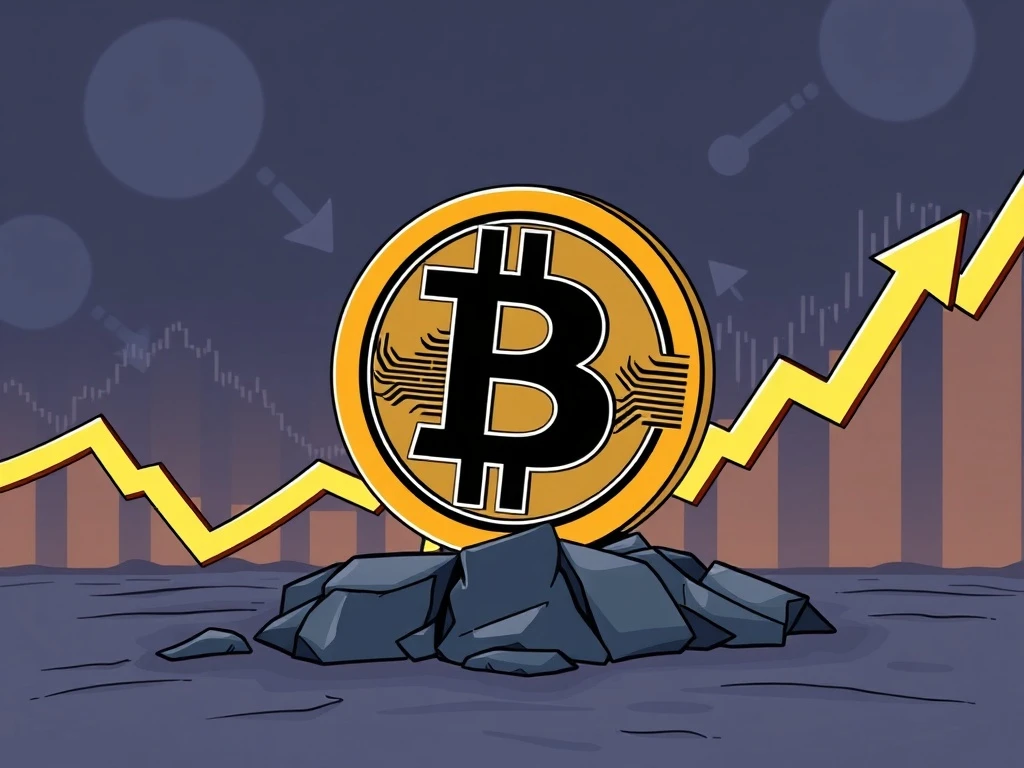Bitcoin Price Plunges: Alarming US Trade Deficit & China Bank Crisis Trigger Crypto Market Sell-Off

The crypto market recently experienced an alarming sell-off, with the Bitcoin price dropping significantly. Investors are now closely watching how global macroeconomic challenges influence digital assets. This downturn has caught many traders off guard, triggering substantial liquidations and raising questions about market stability. Understanding these broader economic shifts is crucial for anyone navigating the volatile cryptocurrency landscape.
Bitcoin Price Plummets: Macroeconomic Headwinds Drive Crypto Sell-Off
Bitcoin (BTC) recently fell to its lowest point in 50 days, dipping below $108,000. This sharp decline caused over $137 million in liquidations for leveraged bullish positions. The move mirrored a 1.2% pullback in the tech-heavy Nasdaq 100 index. Growing doubts about the sustainability of artificial intelligence (AI) sector growth largely fueled this broader market shift. Consequently, market participants are now assessing whether Bitcoin’s downturn reflects wider macroeconomic pressures or remains limited to the cryptocurrency sector.
Investor caution has intensified due to several global economic indicators. Rising US trade deficits, significant insider stock sales, and weaknesses in Chinese banks all contribute to a heightened sense of risk. These factors collectively push both stock and crypto traders to reduce their exposure. While whales and miners continue selling Bitcoin, the overarching macroeconomic weakness remains the primary driver of its recent performance. This complex interplay highlights the interconnectedness of global finance and the digital asset space.
US Trade Deficit Widens, Signalling Economic Strain
The United States recently reported a substantial increase in its trade deficit for July. Imports surpassed exports by $103.6 billion, representing a 22% increase. This widening gap exceeded economists’ forecasts, raising significant concerns. Reuters noted that trade ‘could be a major drag on economic growth in the third quarter.’ Such an imbalance indicates potential underlying economic weakness, directly impacting investor sentiment across all markets, including the crypto market.
A larger trade deficit suggests that a country is importing more goods and services than it is exporting. This can lead to a decrease in domestic production and employment. For investors, it signals potential economic slowdowns or currency devaluation pressures. Therefore, the expanding US trade deficit acts as a critical indicator, prompting a cautious approach to investments. This global economic data directly influences risk appetite, affecting assets like Bitcoin.
China Bank Woes Deepen Amidst Rising Bad Debt
Additional concerns have emerged from China, where the country’s five largest lenders reported record-low margins and rising delinquencies. According to the Financial Times, these institutions are facing significant financial strain. Chinese retail banks disposed of $5.2 billion in bad debt during the first quarter. This figure represents an eightfold increase from just a year earlier, based on data from the Banking Credit Asset Registration and Transfer Center. These issues highlight potential instability within China’s financial system.
The rising bad debt in Chinese banks indicates a broader economic slowdown in the region. This situation can lead to tighter credit conditions and reduced economic activity. Global investors monitor such developments closely. Financial instability in a major economy like China inevitably ripples through international markets. Consequently, this adds another layer of caution for those invested in or considering the crypto market, as global economic health underpins asset valuations.
Alarming Insider Sales & AI Sector Doubts Fuel Caution
Prominent market observer Malone_Wealth highlighted an unprecedented trend last week: the top 200 stock trades by executives, directors, and major shareholders were all sales. This significant insider activity often signals a lack of confidence in future market performance. Major transactions included a planned $961 million sale by Walmart’s Jim C. Walton and $164 million from Snowflake’s Frank Slootman. Other large moves came from Amer Sports’ Dennis J. Wilson ($160 million), Dutch Bros’ Travis Boersma ($81.5 million), and Klaviyo’s Andrew Bialecki ($73.7 million). These insider sales suggest a cautious outlook from those closest to corporate operations.
The AI sector has also become a growing source of unease. Nvidia (NVDA) reportedly revealed that 44% of its data center revenue came from just two clients. Despite strong quarterly results, NVDA shares fell 4.7% over two trading sessions. Meanwhile, Super Micro Computer (SMCI), a key Nvidia partner, warned about weaknesses in its financial reporting. This $25 billion company saw its stock decline 5.1% on Friday. These developments raise questions about the long-term stability and growth prospects within the rapidly expanding AI industry.
Crypto Market Reacts: Whales, Miners, and Treasury Yields
Signs of risk aversion are also evident in the bond market. Demand for US Treasurys drove the 2-year yield down to 3.62%, its lowest level in four months. This yield was well below 3.80% just a week earlier. Investors’ willingness to accept lower returns, despite persistent inflation, suggests a growing preference for safety over risk. This flight to quality often occurs during periods of economic uncertainty, impacting the broader crypto market.
Recent Bitcoin sales by long-dormant whales and steady miner outflows have further contributed to the negative market tone. These actions indicate a reduction in supply from key holders, adding selling pressure. Still, the primary driver of BTC’s latest decline remains the weakening macroeconomic outlook. Many traders are opting to reduce their exposure ahead of upcoming national holidays. Therefore, the confluence of global economic concerns and market-specific selling pressure continues to shape Bitcoin’s trajectory.
This article is for general information purposes and is not intended to be and should not be taken as legal or investment advice. The views, thoughts, and opinions expressed here are the author’s alone and do not necessarily reflect or represent the views and opinions of Crypto News Insights.









